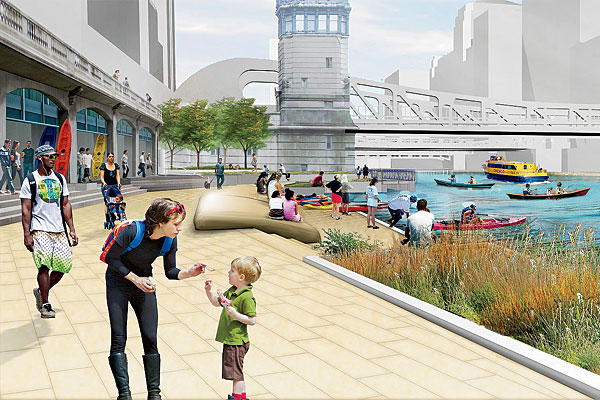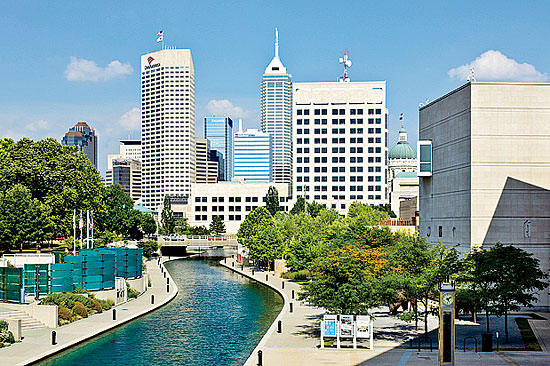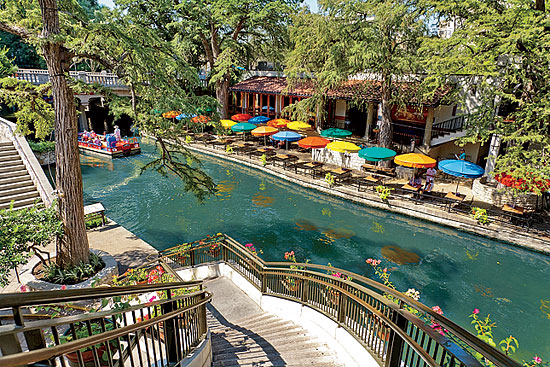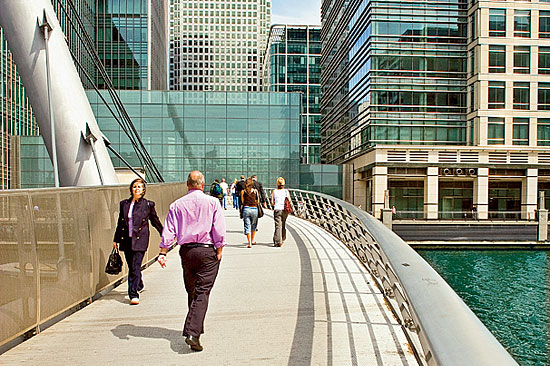
Rahm’s plan: The river at Dearborn and Clark Streets as envisioned in the mayor’s new riverfront plan, initially unveiled October 2012
Mayor Rahm Emanuel’s latest obsession—a project that he says will be one of the “legacy” showpieces the city will remember him by—is to liven up the downtown riverfront. His plan calls for transforming six waterside blocks between State and Lake Streets, lining them with landscaped walking and biking paths, plus offering access to the river for kayaking, fishing, and swimming. The project also includes restaurants, cafés, and an outdoor theatre. “It could be one of the most exciting urban passages in the world, our Champs Élysées,” says Phil Enquist, who leads Skidmore, Owings & Merrill’s city design practice.
Emanuel is now trying to drum up the $100 million or so needed to make the plan a reality (at presstime, he told Chicago that he was close to making a major announcement). But before he barges ahead, he’d do well to take some lessons from what worked—and what didn’t—in three other cities that have undertaken similar projects.

LESSON 1: INDIANAPOLIS
Don’t turn your back on the rest of the city.
Indiana’s capital city started building its 1.5-mile Canal Walk in the 1980s, when urban flight had rendered many downtowns empty and unfriendly. The design, apartments bordering—but walled off from—the waterside promenade, mixed with cold office-park commercial architecture and private parking lots, reflects the era’s mindset. “There was a belief that you had to introduce suburban-type development, to build environments that are secure,” explains Aaron Renn, an urban analyst and blogger at Urbanophile.
Now, about 25 years later, Indy’s downtown has enlivened considerably. But its riverfront hasn’t. That’s because Canal Walk, while a nicely landscaped recreational amenity for those who live nearby, isn’t integrated into the economic life that surrounds it, Renn says.

LESSON 2: SAN ANTONIO
Go mixed-use or go home.
Unlike Indianapolis, which designed its river walk for the downtown it had at the time, San Antonio built its river walk for the downtown it wanted in the future. Stretching eight miles (with seven more on the way), Paseo del Rio is a continuous ribbon of shops, restaurants, galleries, hotels, and recreational space. It has become the centerpiece of the city and a major economic driver, says Steve Nivin, an economist at St. Mary’s University in San Antonio. In 2011, Forbes rated the Paseo del Rio one of the top tourist attractions in the nation, with more visitors than the Grand Canyon.
The key to its success, says Nivin, is a mix of commerce and recreation that has made it a bustling area for tourists and locals, day and night. Chicago’s still-conceptual plans suggest that its riverfront esplanade would focus mainly on outdoor recreation, with limited commerce. That would probably give Chicago’s riverfront “less lift,” says Renn.

LESSON 3: LONDON
Think beyond downtown.
Thames Path snakes through London, ending in the city’s East End. That neighborhood was for many years a notorious, slum-filled backwater. But in the late 1990s, led by the London Docklands Development Corporation, the city began reimagining that part of the riverfront. For example, it transformed a declining port—once the largest in the world—into a haven for businesses, anchored by Canary Wharf, a massive financial center. Surrounding areas have subsequently attracted a mix of bohemians (the East End birthed the Young British Artists movement) and tech companies.
London’s experience suggests that if Emanuel were to extend development of Chicago’s river walk into the industrial areas beyond the Loop, he could attract new businesses to the adjacent neighborhoods, north and south. “It’s an untapped opportunity,” says Enquist.
Photography: (Indianapolis) Henryk Sadura; (San Antonio) Tim Thompson/Corbis; (London) Atlantide Phototravel/Corbis; Rendering: Courtesy of the City of Chicago


